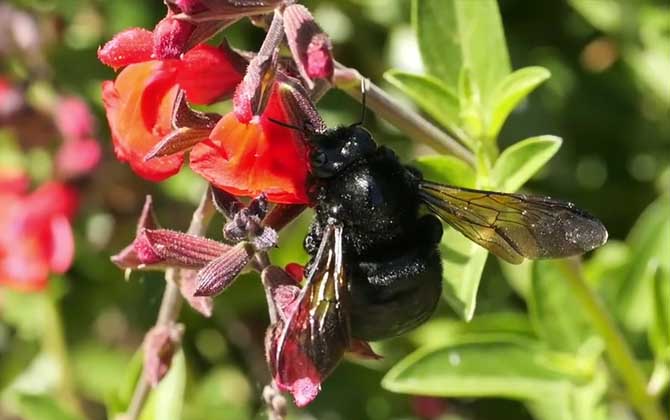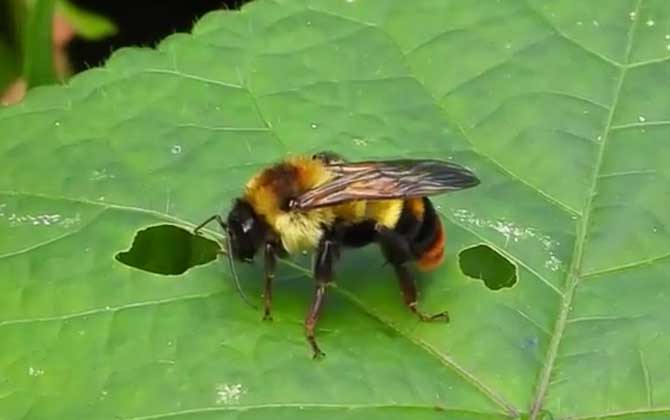The Bamboo Bee (Xylocopa spp.), also known as the Dark Carpenter Bee or Bamboo Carpenter Bee, is a solitary insect belonging to the family Apidae. Named for its unique nesting behavior in decaying bamboo and wood, this species is widely distributed across southern China. Equipped with a venomous stinger connected to abdominal (venom glands), it demonstrates defensive behavior when threatened. Let’s explore its characteristics and potential risks to humans.

Species Characteristics
Key biological features include:
- Taxonomy: Animalia > Arthropoda > Insecta > Hymenoptera > Apidae > Xylocopa
- Habitat: Prefers decaying bamboo and wooden structures, often found nesting under eaves
- Physical Identification:
– Metallic dark blue/black coloration
– Robust body (15-25mm length)
– Distinctive嗡嗡声 during flight - Behavioral Pattern: Solitary nesting with strong mandibles for wood excavation

Venom Profile
Toxicity Level: Moderate to Low
- Immediate Effects:
– Intense localized pain (onset within seconds)
– Erythema and edema spreading 2-5cm around sting site
– Pruritus lasting 24-48 hours - Venom Composition:
– Melittin (40-50% of dry weight)
– Phospholipase A2
– Histamine-like compounds
– Specific allergens: Api m 1, Api m 2 - Clinical Progression:
– Acute phase: 0-6 hours
– Inflammatory phase: 6-72 hours
– Resolution phase: 3-5 days
Note: While generally non-lethal, hypersensitivity reactions occur in 0.5-3% of stings.

Medical Management Protocol
| Step | Procedure | Scientific Rationale |
|---|---|---|
| 1. Immediate Decontamination |
|
Neutralizes formic acid components in bee venom |
| 2. Topical Treatment |
|
Reduces prostaglandin synthesis and histamine release |
| 3. Allergy Prevention |
|
Blocks H1 receptors and inhibits cytokine cascade |
Ecological Significance
Beyond their defensive capabilities, Bamboo Bees play crucial ecological roles:
- Pollination Efficiency:
– Buzz pollinators for night-blooming plants
– Key pollinators for 15+ native plant species - Environmental Indicators:
– Sensitive to pesticide residues
– Population density reflects ecosystem health - Traditional Uses:
– Apitherapy in Chinese medicine
– Source of propolis and rare honeys
Safety Reminder: Always consult medical professionals for systemic reactions. Carry identification if known allergic.